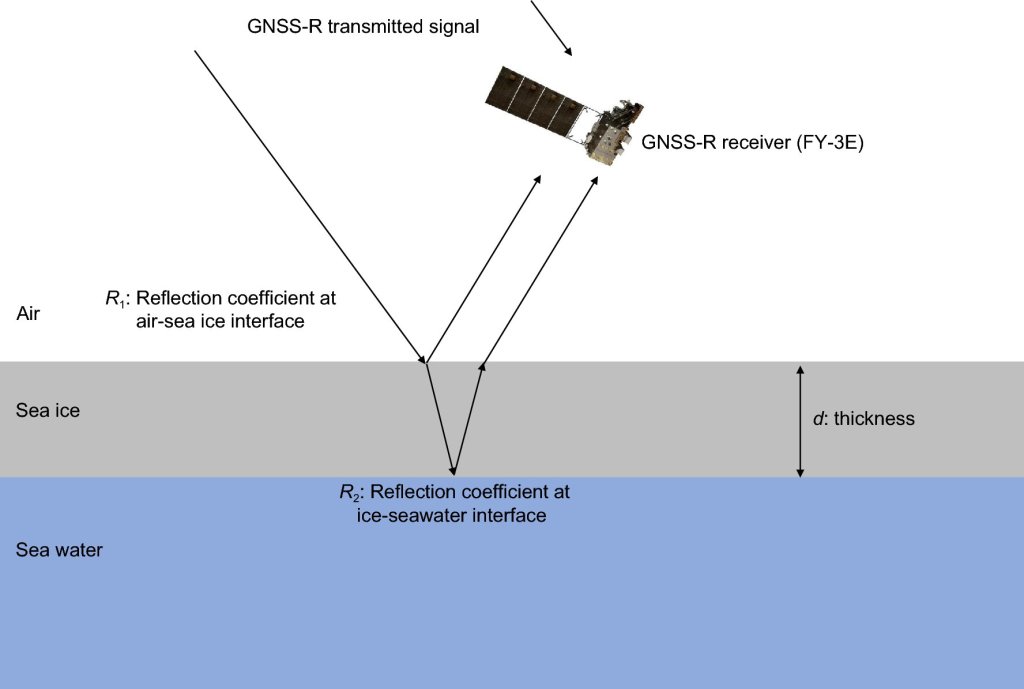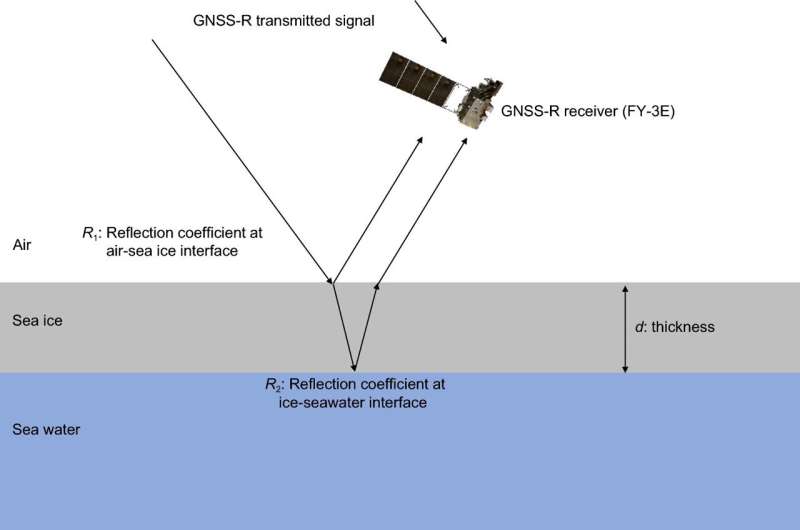
Ice recon: Satellite navigation breakthrough in mapping sea ice thickness (Image Credit: Phys.org)

The polar regions are critical to understanding climate change due to their significant impact on global weather patterns and sea levels. Traditional methods of measuring sea ice thickness face challenges such as high costs and limited spatial coverage.
Due to these challenges, an in-depth study is necessary to explore more efficient and accurate techniques for sea ice thickness retrieval.
Researchers at the School of Remote Sensing and Geomatics Engineering, Nanjing University of Information Science and Technology, have published a new study in Satellite Navigation that introduces a refined method using Fengyun-3E (FY-3E) satellite data to estimate sea ice thickness (SIT) with a three-layer model, promising a significant advancement in polar climate studies.
The study rigorously evaluates the performance of a novel three-layer model against the traditional two-layer model for retrieving SIT. Using sea ice data from 2022 and 2023, the three-layer model demonstrated a Root Mean Square Error (RMSE) of 0.149 meters and a correlation coefficient (r) of 0.830, indicating high accuracy.
In contrast, the two-layer model, while effective for thin ice, showed reduced accuracy for thicker ice, with an RMSE of 0.162 meters and an r value of 0.789. To maximize accuracy, researchers combined the two models, resulting in an RMSE of 0.137 meters and an r value of 0.852.
This combined approach significantly enhances the precision of SIT retrieval, making it applicable to ice thicknesses up to 1.1 meters. This marks a substantial advancement in remote sensing techniques for polar research.
Dr. Qingyun Yan, one of the lead researchers, stated, “This innovative approach leverages the strengths of both two-layer and three-layer models, providing a more accurate and reliable method for monitoring sea ice thickness. It represents a crucial step forward in our ability to study and understand polar regions.”
The enhanced accuracy of sea ice thickness measurements has profound implications for climate research, marine resource development, and polar expedition planning. This method offers a cost-effective and comprehensive solution for large-scale SIT monitoring, aiding in the prediction of climatic changes and supporting sustainable practices in polar regions.
Future developments in GNSS-R technology may further refine these models, leading to even more precise measurements.
More information:
Yunjian Xie et al, Retrieval of sea ice thickness using FY-3E/GNOS-II data, Satellite Navigation (2024). DOI: 10.1186/s43020-024-00138-5
Provided by
TranSpread
Ice recon: Satellite navigation breakthrough in mapping sea ice thickness (2024, June 24)
retrieved 25 June 2024
from https://phys.org/news/2024-06-ice-recon-satellite-breakthrough-sea.html
part may be reproduced without the written permission. The content is provided for information purposes only.








